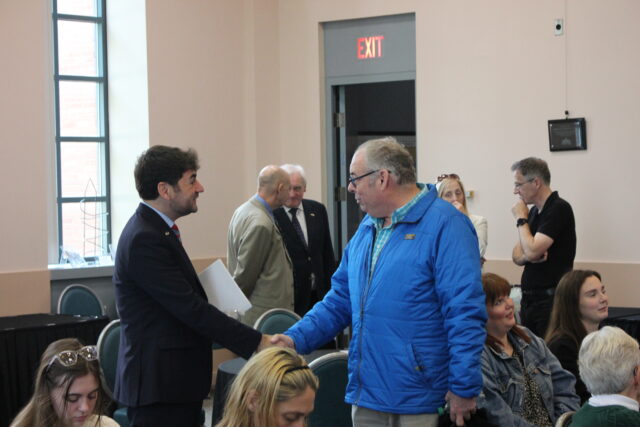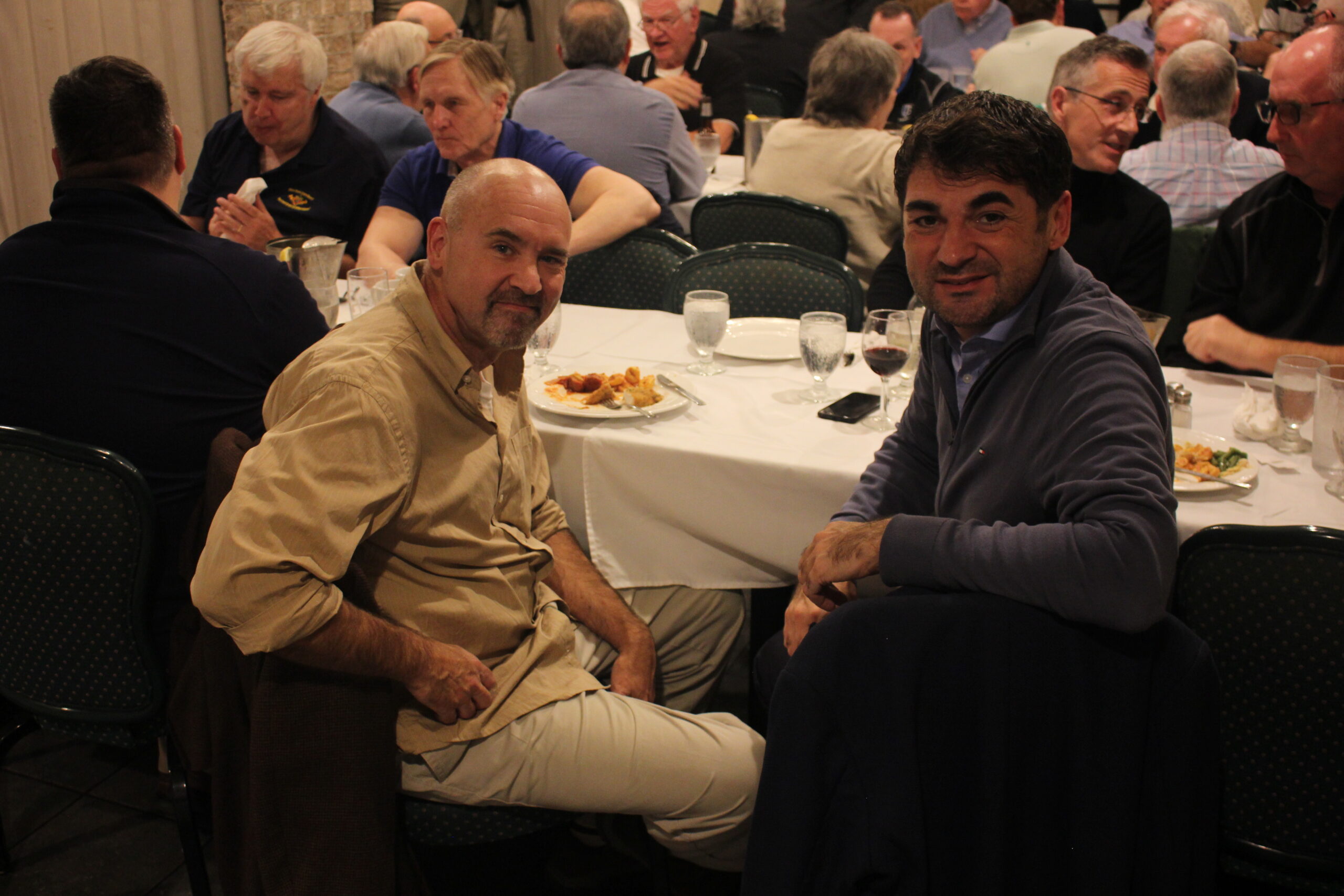By Christopher Gillett
Loïc Guyon, the Honorary French Consul to Limerick, Ireland, and head of the Department of French studies at Mary Immaculate College, gave a lecture at the Youngstown Historical Center of Industry and Labor on Oct. 13 about the exile of an Irish mercenary group, known as the Flight of the Wild Geese.
Guyon was traveling with Bertie Ahern, the former Taoiseach of Ireland, as part of Ahern’s visit to Youngstown State University. The talk was hosted at the YHCIL by David Simonelli, a YSU history professor.
Guyon’s lecture focused on his work locating and returning the remains of Patrick Sarsfield to Ireland. Sarsfield was the leader of the Wild Geese, a band of around 20,000 Irish soldiers exiled by England.

England first invaded Ireland during the 1100s, but became more interested in colonizing the island after the Protestant Reformation when Ireland stayed Catholic. England, over years of warfare and repression, turned the Catholic population into an underclass.
When English King James II repromoted Catholicism, he was overthrown in favor of his son-in-law and daughter, William and Mary, in the Glorious Revolution of 1689. James landed in Ireland, raised an army and lost to the more militarily-experienced William.
When James retreated, many of his soldiers, led by Sarsfield, were given the option of exile, becoming the Wild Geese.
Many Wild Geese and their descendants went on to fight in several conflicts over the next century, including the American Revolution. However, most went to fight in the French army to continue fighting against England.
Sarsfield’s exact death and burial circumstances were uncertain for hundreds of years. Guyon said he became interested in Sarsfield after his appointment as consul.
“When I was appointed [as consul] back in 2019, immediately I tried to look at what in the history of Limerick would connect it to France, and that’s when I came across the history of the Flight of the Wild Geese,” Guyon said.
Guyon found secondary sources on Sarsfield’s death fictional, so he had to search through death records. Guyon said researching was difficult during the pandemic, but was grateful historical records were available online.
“The hardest part [of the project] was to work during the pandemic without being able to travel at the time,” Guyon said. “Thankfully most of [the death records] were digitized, were available online, but I spent hours and hours and hours reading through thousands of pages of documents.”
Guyon has tracked down Sarsfield’s burial to St. Martin’s Church in Huy, Belgium. The property was by then the backyard of a house. Guyon said he was happy upon learning who owned the house.
“I contacted the mayor of Huy — and asked, ‘Who is the owner of that house?’ and I was actually told that the city council was purchasing the site, and once the purchase would be completed, it would give me access to the site … For me, it’s like a sign of destiny,” Guyon said.
Guyon also tracked down living distant male relatives of Sarsfield, and found they had unique genetic markers that could be matched to whichever remains are Sarsfield’s body.
Guyon is raising money for excavation on GoFundMe. The project can also be found through #SarsfieldHomecoming on Instagram, Facebook, LinkedIn and Twitter.


